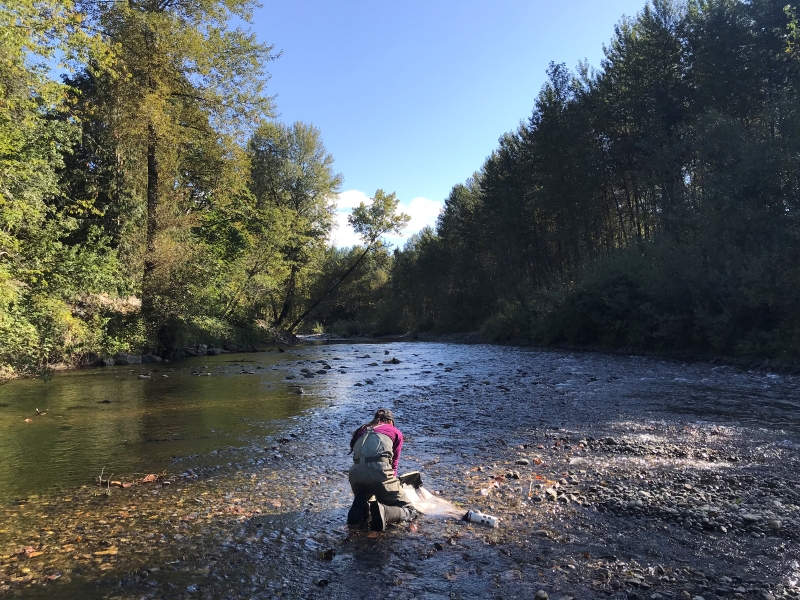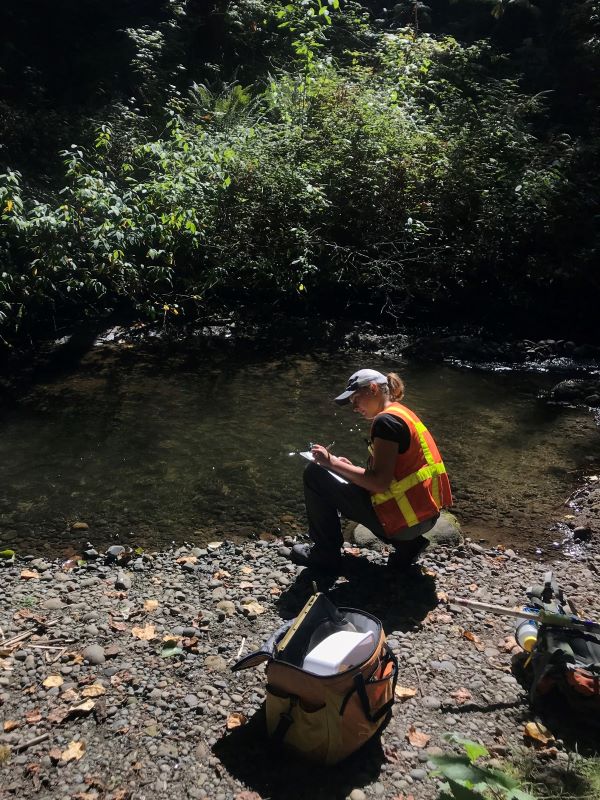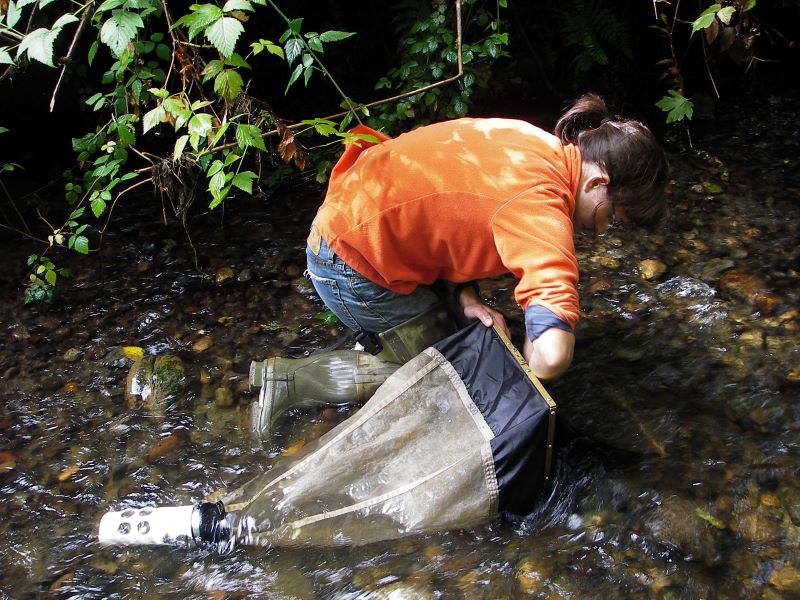The benthic macroinvertebrate collection process
Each summer a team of scientists visits about 170 sampling sites in King County. The scientists are part of the King County “Stream Team”. The team's goal is to collect benthic macroinvertebrate samples from each site. At the same time, the team collects information about the site's habitat. The data collected by the team helps King County to assess stream health. Summer is the best time to collect samples. Summer water flow is deep and swift enough to use the sampling equipment without being a danger. The King County Stream Team visits sites throughout the County. Some sites are in wadable rivers like the Tolt and forks of the Snoqualmie. Some sites are in the smallest of backyard streams. Keep an eye out during the summer season, you may even see the Stream Team in your neighborhood!

Habitat data collection
Information about stream habitats help scientists understand the community of macroinvertebrates they collect. Stream habitat can affect the kinds and number of benthic macroinvertebrates sampled. For example, some kinds of macroinvertebrates thrive in bigger, deeper streams. Other kinds prefer small, shaded streams. Collecting information about site habitat helps us understand these preferences. It can also provide clues if the community changes over time.

Our Stream Team gathers different types of data using specialized equipment. They measure how much shade a stream is getting, the stream width and depth, and the speed that the water is moving. They also perform a Wolman pebble count, which is a survey of the stream bottom. The pebble count tells us if the stream bottom is sandy, has lots of boulders, or something in the middle. In some streams, we set out data loggers that record water temperatures over the year.

Bug collecting
The primary tool we use to collect benthic macroinvertebrates is a Surber sampler. It consists of a 1 square foot metal frame attached to a long mesh net with a collection cup on the end. To collect a sample, we position the Surber sampler on the bottom of the stream within a riffle. A riffle is the shallow, well oxygenated, and fast-moving area within a stream. We then stir up the bottom sediment and rocks within the metal frame of the Surber sampler. This dislodges the macroinvertebrates up out of the stream bottom and into the net. We repeat this action 8 times in several different riffles. The contents of the net represent a single sample collected from an 8 square-foot area.
We empty the contents of the net into sample bottles, which are then sent off to a laboratory.

 Translate
Translate